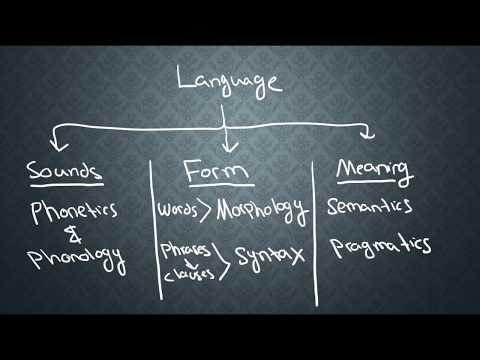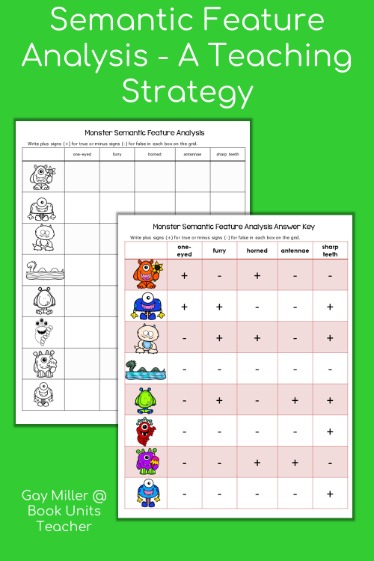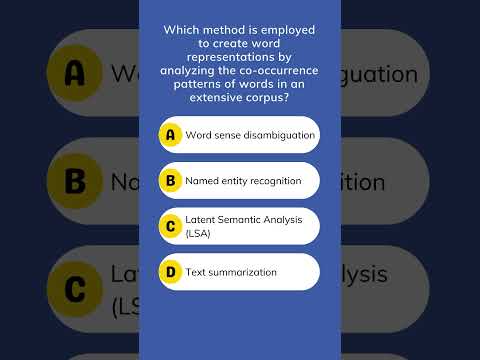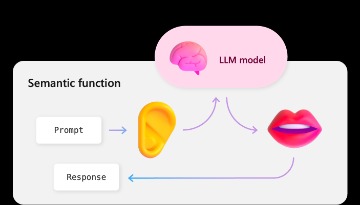How to use Zero-Shot Classification for Sentiment Analysis by Aminata Kaba
The implementation process of customer requirements classification based on BERT deep transfer model is shown in Fig. Logistic regression predicts 1568 correctly identified negative comments in sentiment analysis and 2489 correctly identified positive comments in offensive language identification. The confusion matrix obtained for sentiment analysis and offensive language Identification is illustrated in the Fig. Figure 3 shows the training and validation set accuracy and loss values of Bi-LSTM model for offensive language classification.
Sentiment analysis helps you gain insights into customer feedback, brand perception, or public opinion to improve on your business’s weaknesses and expand on its strengths. The feedback can inform your approach, and the motivation and positive reinforcement from a great customer interaction can be just what a support agent needs to boost morale. Optimizing for voice search is very different from traditional SEO because you must immediately get to the point (for intent-based searches) and keep your content much more conversational. Today, you see a different result with a featured snippet and understanding of the context behind the question with extra information. In this piece, you’ll learn what semantic search is, why it’s essential for SEO, and how to optimize your content for it.
Save Model
The reason is that the semantic presentation in the behavioral and structural domain is usually manifested as “verb-noun” matching form, which is difficult to be extracted directly. From what has been discussed above, the specific ILDA implementation procedures are described as follows. (1) Preprocess all documents in the functional requirement corpus by carrying out Chinese words segmentation and deleting the Chinese stop-words. You can foun additiona information about ai customer service and artificial intelligence and NLP. (2) Select the appropriate topic quantity K and initialize the hyper-parameters α and β. Different topic analysis results under different topic quantity can be acquired. (5) The optimal topic quantity K is determined based on the proposed measurable indicator Perplexity-AverKL.
A semantic analysis-driven customer requirements mining method for product conceptual design – Nature.com
A semantic analysis-driven customer requirements mining method for product conceptual design.
Posted: Thu, 16 Jun 2022 07:00:00 GMT [source]
The main goal of sentiment analysis is to determine the sentiment or feeling conveyed in text data and categorize it as positive, negative, or neutral. Take into account news articles, media, blogs, online reviews, forums, and any other place where people might be talking about your brand. This helps you understand how customers, stakeholders, and the public perceive your brand and can help you identify trends, monitor competitors, and track brand reputation over time. Sentiment analysis, or opinion mining, analyzes qualitative customer feedback (often written language) to determine whether it contains positive, negative, or neutral emotions about a given subject.
How to use Zero-Shot Classification for Sentiment Analysis
These challenges necessitate ongoing research and development of more sophisticated ABSA models that can navigate the intricacies of sentiment analysis with greater accuracy and contextual sensitivity. The simple Python library supports complex analysis and operations on textual data. For lexicon-based approaches, TextBlob defines a sentiment by its semantic orientation and the intensity of each word in a sentence, which requires a pre-defined dictionary classifying negative and positive words.
Thus, as and when a new change is introduced on the Uber app, the semantic analysis algorithms start listening to social network feeds to understand whether users are happy about the update or if it needs further refinement. Moreover, granular insights derived from the text allow teams to identify the areas with loopholes and work on their improvement on priority. By using semantic analysis tools, concerned business stakeholders can improve decision-making and customer experience.
Critical elements of semantic analysis
The semantic analysis process begins by studying and analyzing the dictionary definitions and meanings of individual words also referred to as lexical semantics. Following this, the relationship between words in a sentence is examined to provide clear understanding of the context. These tools specialize in monitoring and analyzing sentiment in news content. They use News APIs to mine data and provide insights into how the media portrays a brand or topic. Sprout Social offers all-in-one social media management solutions, including AI-powered listening and granular sentiment analysis.
Tokenization is the process of separating raw data into sentence or word segments, each of which is referred to as a token. In this study, we employed the Natural Language Toolkit (NLTK) package to tokenize words. Tokenization is followed by lowering the casing, which is the process of turning each letter in the data into lowercase. This phase prevents the same word from being vectorized in several forms due to differences in writing styles.
Uncovering the essence of diverse media biases from the semantic embedding space
This project aims to monitor news reports from all over the world, including print, broadcast, and online sources, in over 100 languages. Each time an event is mentioned in a news report, a new row is added to the Mention Table (See Supplementary Information Tab.S1 for details). Given that different media outlets may report on the same event at varying times, the same event can appear in multiple rows of the table.
- Buffer offers easy-to-use social media management tools that help with publishing, analyzing performance and engagement.
- The class labels of sentiment analysis are positive, negative, Mixed-Feelings and unknown State.
- Once you understand searcher intent, start creating content that directly addresses their intent instead of creating content around individual keywords or broad topics.
- Recently, Calomiris and Mamaysky (2018) used news articles to develop a methodology to predict risk and return in stock markets in developed and emerging countries.
- Its deep learning capabilities are also robust, making it a powerful option for businesses needing to analyze sentiments from niche datasets or integrate this data into a larger AI solution.
SST is well-regarded as a crucial dataset because of its ability to test an NLP model’s abilities on sentiment analysis. As I have already realised, the training data is not perfectly balanced, ‘neutral’ class has 3 times more data than ‘negative’ class, and ‘positive’ class has around 2.4 times more data than ‘negative’ class. I will try fitting a model with three different data; oversampled, downsampled, original, to see how different sampling techniques affect the learning of a classifier. Employee sentiment analysis, however, enables HR to make use of the organization’s unstructured, qualitative data by determining whether it’s positive, negative or neutral and to what extent.
The brand saw a 43% revenue increase in 2023, and its audience is more loyal than ever. In July of 2022, BMW’s social mentions spiked—but the engagement was not positive. Confusion ran rampant about a planned decision to sell subscription services for in-car functions. Identifying your strengths and focusing on promoting those can help you build a strong brand sentiment.
Brand24
Semantic analysis helps fine-tune the search engine optimization (SEO) strategy by allowing companies to analyze and decode users’ searches. The approach helps deliver optimized and suitable content to the users, thereby boosting traffic and improving result relevance. It supports multimedia content by integrating with Speech-to-Text and Vision APIs to analyze audio files and scanned documents. The tool can handle 242 languages, offering detailed sentiment analysis for 218 of them. Awario is a specialized brand monitoring tool that helps you track mentions across various social media platforms and identify the sentiment in each comment, post or review.
The function in Pattern returns polarity and the subjectivity of a given text, with a Polarity result ranging from highly positive to highly negative. Topping our list of best Python libraries for sentiment analysis is Pattern, which is a multipurpose Python library that can handle NLP, data mining, network analysis, machine learning, and visualization. Social media sentiment analysis is sometimes called “opinion mining.” That’s because it’s all about digging into the words and context of social posts to understand the opinions they reveal. We’ll show you how to conduct a step-by-step social media sentiment analysis with practical tips for improving your social media strategy. The insights you gain from sentiment analysis can translate directly into positive changes for your business.
For instance, employing sentiment analysis algorithms trained on extensive data from the target language may enhance the capability to discern sentiments within idiomatic expressions and other language-specific attributes. Similarly, each confusion matrix provides insights into the strengths and weaknesses of different translator and sentiment analyzer model what is semantic analysis combinations in accurately classifying sentiment. Evaluating the numbers in these matrices helps understand the models’ overall performance and effectiveness in sentiment analysis tasks. Aspect-based sentiment analysis breaks down text according to individual aspects, features, or entities mentioned, rather than giving the whole text a sentiment score.
Interestingly, ChatGPT tended to categorize most of these neutral sentences as positive. However, since fewer sentences are considered neutral, this phenomenon may be related to greater positive sentiment scores in the dataset. Considering these sets, the data distribution of sentiment scores and text sentences is displayed ChatGPT below. The plot below shows bimodal distributions in both training and testing sets. Moreover, the graph indicates more positive than negative sentences in the dataset. Each column corresponds to a media outlet, and each row corresponds to a target word which usually means an entity or concept in the news text.
The obtained text data is translated into English due to the Chinese experimental environment. An embedding is a learned text representation in which words with related meanings are represented similarly. It’s a Stanford-developed unsupervised learning system for producing word embedding from a corpus’s global phrase co-occurrence matrix. The essential objective behind the GloVe embedding is to use statistics to derive the link between the words. BERT can take one or two sentences as input and differentiate them using the special token [SEP]. The [CLS] token, which is unique to classification tasks, always appears at the beginning of the text17.
Furthermore, incorporating multimodal information, such as text, images, and user engagement metrics, into sentiment analysis models could provide a more holistic understanding of sentiment expression in war-related YouTube content. Nowadays there are several social media platforms, but in this study, we collected the data from only the YouTube platform. Therefore, future researchers can include other social media platforms to maximize the number of participants. Social media users express their opinions using different languages, but the proposed study considers only English language texts. To solve this limitation future researchers can design bilingual or multilingual sentiment analysis models. Large volumes of data can be analyzed by deep learning algorithms, which can identify intricate relationships and patterns that conventional machine learning methods might overlook20.
The Bi-LSTM model result shows an accuracy of 90.76%, 89.18%, and 85.27% for the training, validation, and testing respectively. As presented in Table 5, after regularization, the accuracy of the model was improved, and the result shows that there is minimal difference ChatGPT App observed among training, validation, and test accuracy. This further shows that the problem of over-fitting is solved as compared to the previous result achieved before regularization. Figure 8 also shows the learning curve of the CNN Model after regularization.
Apart from these vital elements, the semantic analysis also uses semiotics and collocations to understand and interpret language. Semiotics refers to what the word means and also the meaning it evokes or communicates. For example, ‘tea’ refers to a hot beverage, while it also evokes refreshment, alertness, and many other associations. On the other hand, collocations are two or more words that often go together. These tools run on proprietary AI technology but don’t have a built-in source of data tapped via direct APIs, such as through partnerships with social media or news platforms. Classify sentiment in messages and posts as positive, negative or neutral, track changes in sentiment over time and view the overall sentiment score on your dashboard.
Sentence-level sentiment analysis based on supervised gradual machine learning – Nature.com
Sentence-level sentiment analysis based on supervised gradual machine learning.
Posted: Mon, 04 Sep 2023 07:00:00 GMT [source]
Because the review vastly includes other people’s positive opinions on the movie and the reviewer’s positive emotions on other films. In this post, we will compare and contrast the four NLP libraries mentioned above in terms of their performance on sentiment analysis for app reviews. In our prediction, it was implicit that the subject matter in the pre-COVID period would be less sombre in tone than in the COVID period. This was seen to be true to a certain extent, in that the variation here is only very slight in the case of the English periodical. We predicted that the subject matter of the first period would revolve around economics and business, while the second period would focus on the COVID crisis, and this we assumed would be the case for both publications.
Kano model as well as its derivatives is an available requirements analysis tool, which distinguishes the different nonlinear relationships between customer requirements fulfillment and customer satisfaction12. Xu et al.13 presented an analytical Kano model to classify functional requirements into logical groups. This leads to an optimal trade-off between customer classification and producer capability. Lou et al.14 proposed a data-driven approach for customer requirements discernment via Kano model, intuitionistic fuzzy sets theory and electroencephalogram technology. The vagueness of requirements is handled at the semantic expression and neurocognitive level.




